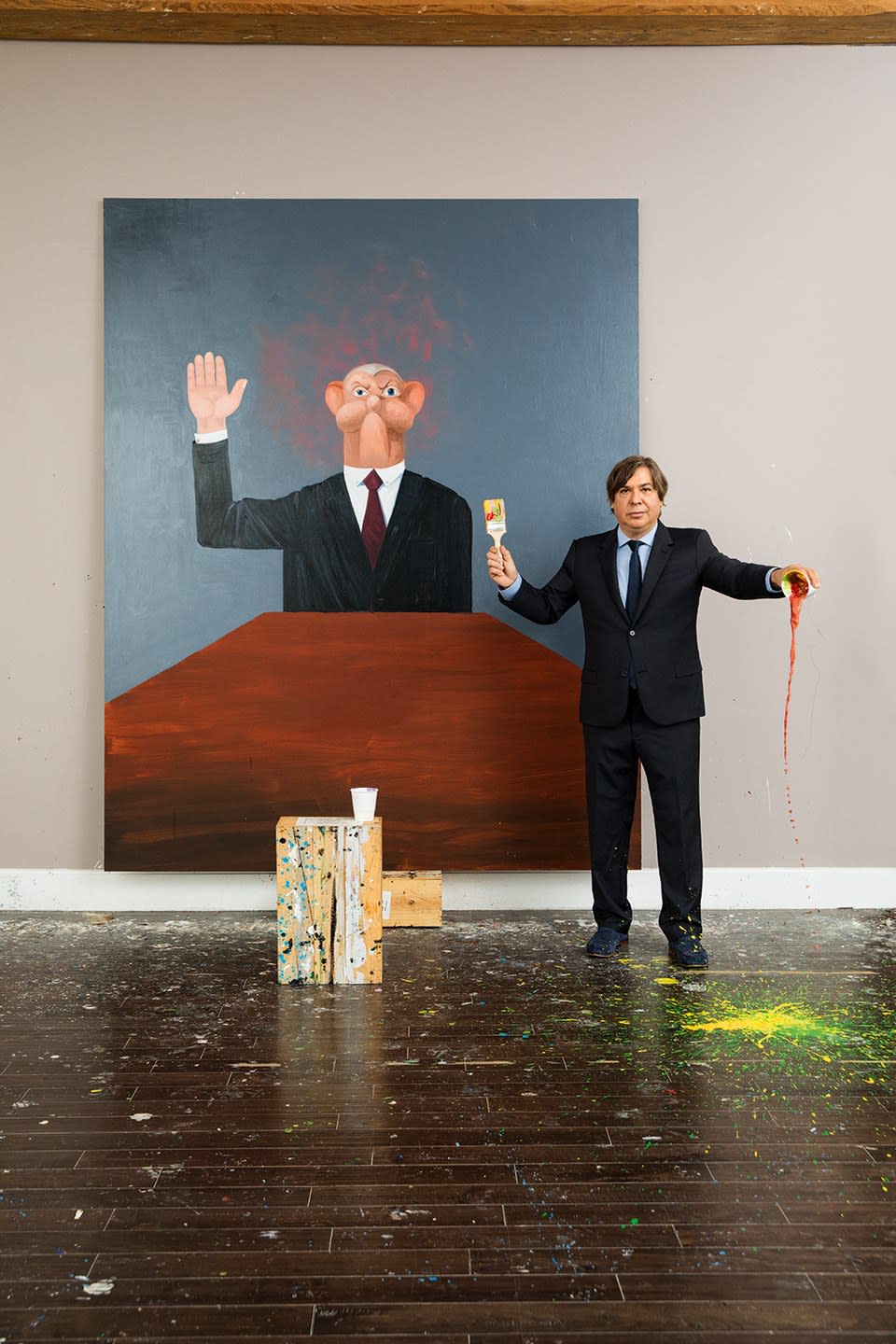Portrait of an Artist: George Condo

As the world grapples with frightening new levels of terrorism, racism and global political unrest, George Condo says he has ironically never felt more inspired. The artist, best known for his fantastical depictions of debauchery and comedic contoured caricatures of subjects both real and imaginary, explains that the current unstable environment lends artists a creative advantage. In his Soho studio, Condo is affable and energetic, enthusiastically sharing the genesis for some of his latest works. Blaringly absent is any reference to the man others have endlessly lampooned. Condo says he doesn’t paint Donald Trump because he leaves him no room creatively. “If I had to paint Donald Trump, I would paint him exactly the way he is, because I can think of nothing worse,” he explains with a smile.
Recognized as one of the most influential living American artists—he has worked for Warhol, befriended Basquiat, exhibited alongside Picasso and conjured controversy with his “Cabbage Patch” portrait of Queen Elizabeth and provocative album cover for Kayne West—Condo’s hybrid of candour, illusion, madness and beauty is a genre he himself named “Artificial Realism” back in the 1980s. In this case, it seems that life imitates art and now this term invented by the collectors’ darling has seemingly swept over the entire world. “Fake news has become the norm, and I think now art is the only truth and everything else is a lie,” explains Condo. “I see today’s world as it is! Absurd and exaggerated—and I need to turn it into something truthful. As an artist you are a mirror, but simply reflecting today’s culture is not enough, it has to come through as a visual correction.”
Interestingly, Condo’s predecessor Pablo Picasso, to whom he is frequently stylistically contrasted, believed the contrary; that art is the lie that makes us realize truth. Nonetheless, Condo is humbled by the comparisons and says the father of Ccubism has played a major role in his work. “Picasso forced others into new directions, that was one of his greatest influences,” muses Condo, who has fused many of these historical movements into his original psychological cubist style. “In relation to cubism, I want to see a human face from four different perspectives and four different emotional perspectives, I want to get into their head.”
According to Condo—who is low-key and modest despite his encyclopaedic knowledge of art history, current affairs and mythology—the secret behind his evocative canvases is fairly simple. “There are characters that live within your mind and I want to bring them to light. If you think about how the mind as opposed to the eyes see people, that is the image I want to create.”

